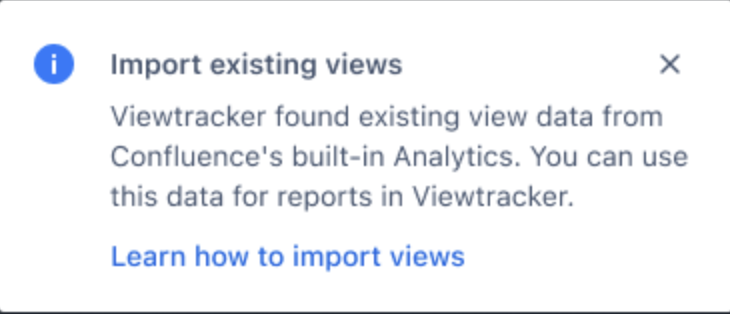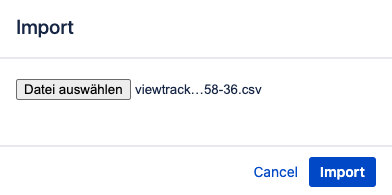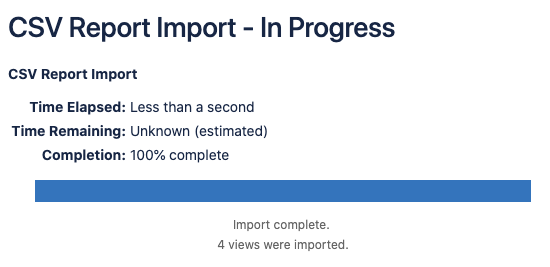Import views into Viewtracker
Import views and add them to Viewtracker reports
There are two options for importing views in Viewtracker Data Center:
Import views from the built-in Confluence Analytics
Import Viewtracker views collected in another Confluence Data Center instance
How to import views from built-in Confluence Analytics
Viewtracker Data Center can detect view data from the built-in Confluence Analytics in the database and add this data to Viewtracker reports. This allows Viewtracker users to analyze Confluence usage in the time before Viewtracker was installed.
Viewtracker administrators will be prompted to import the existing views after installing Viewtracker:

This will take them directly to the right interface. However, they can also access the menu manually:
In the menu “Tracking”, switch to the tab “Import Views”.
.png?inst-v=e7a5baea-dbb0-4ac1-ab4a-0cf567f08382)
In the section “Built-in Analytics Data Import”, tap “Yes, start the import” in the info box.
Confirm the overlay indicating the number of views.

The import process will start. Wait until it is done or tap “Cancel” to stop the process.

Once the import is complete, you can close the overlay and access the imported data in the various Viewtracker reports.

Import Viewtracker Data Center views via CSV
Use this option to import Viewtracker data from another instance that uses Viewtracker Data Center. This is particularly handy if you migrate from one Confluence DC instance to another.
Make sure you have exported all the relevant Viewtracker Views from an existing Confluence instance.
In the new Confluence instance, go to the Global Report.
In the menu “Tracking”, switch to the tab “Import Views”.
.png?inst-v=e7a5baea-dbb0-4ac1-ab4a-0cf567f08382)
In the section “Viewtracker Data Import”, tap “clicking here”.
Choose the CSV file containing the export data.

Wait until the message "x views were imported" appears.

 The imported views will automatically appear in the Built-in Reports of Viewtracker.
The imported views will automatically appear in the Built-in Reports of Viewtracker.Go back to Confluence by clicking on the Confluence button :Confluence: or clicking into the search field and selecting any page.
